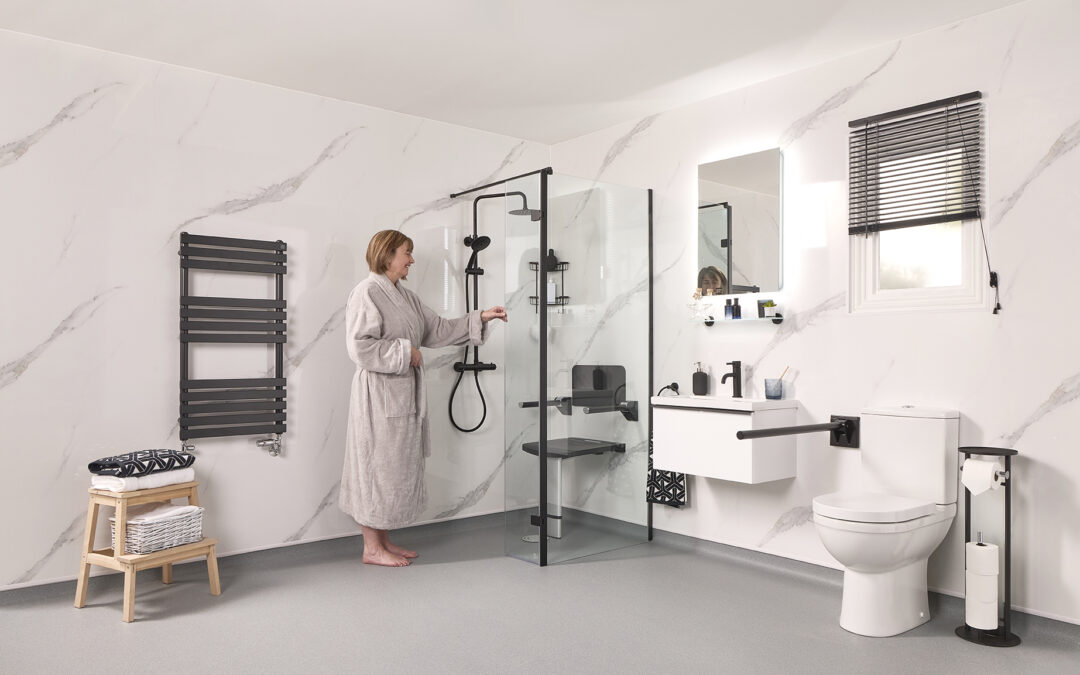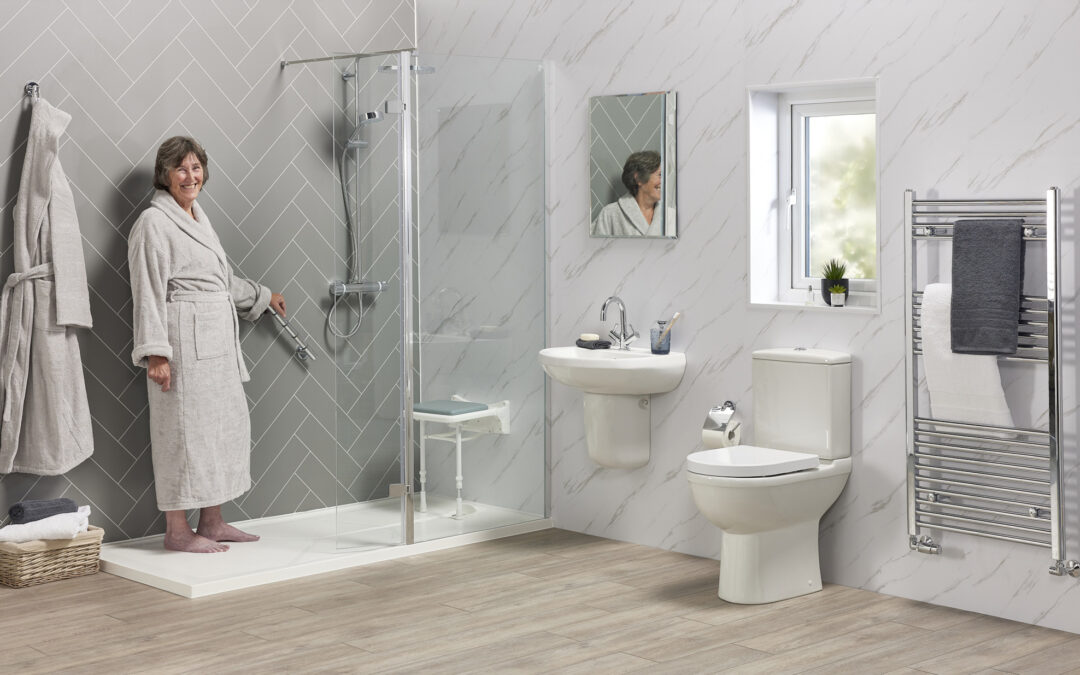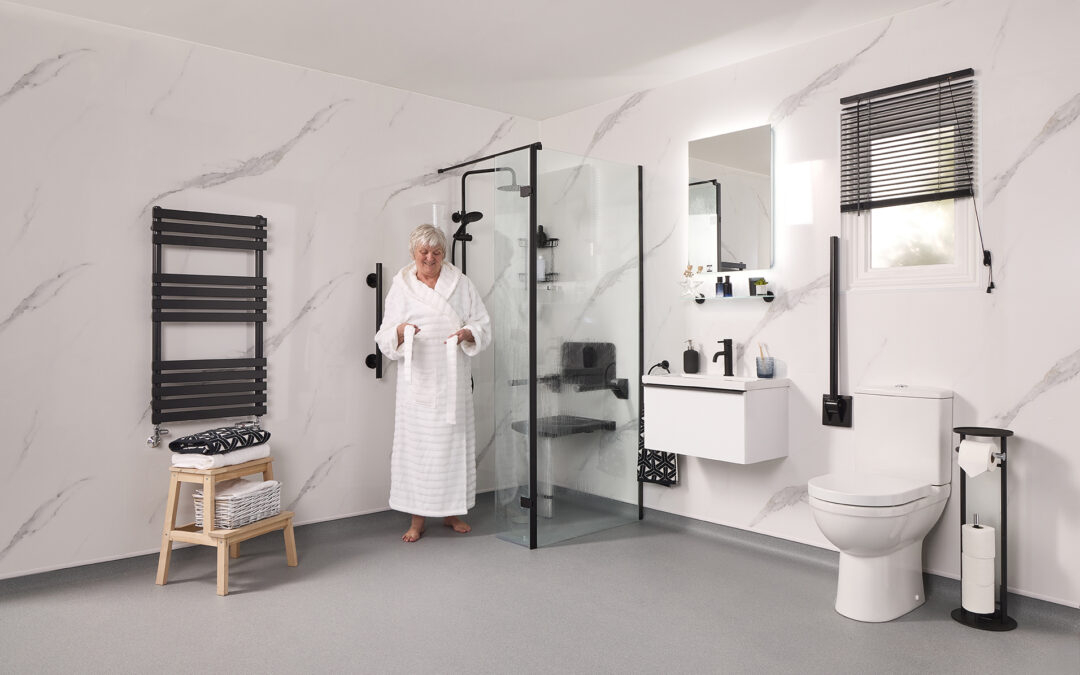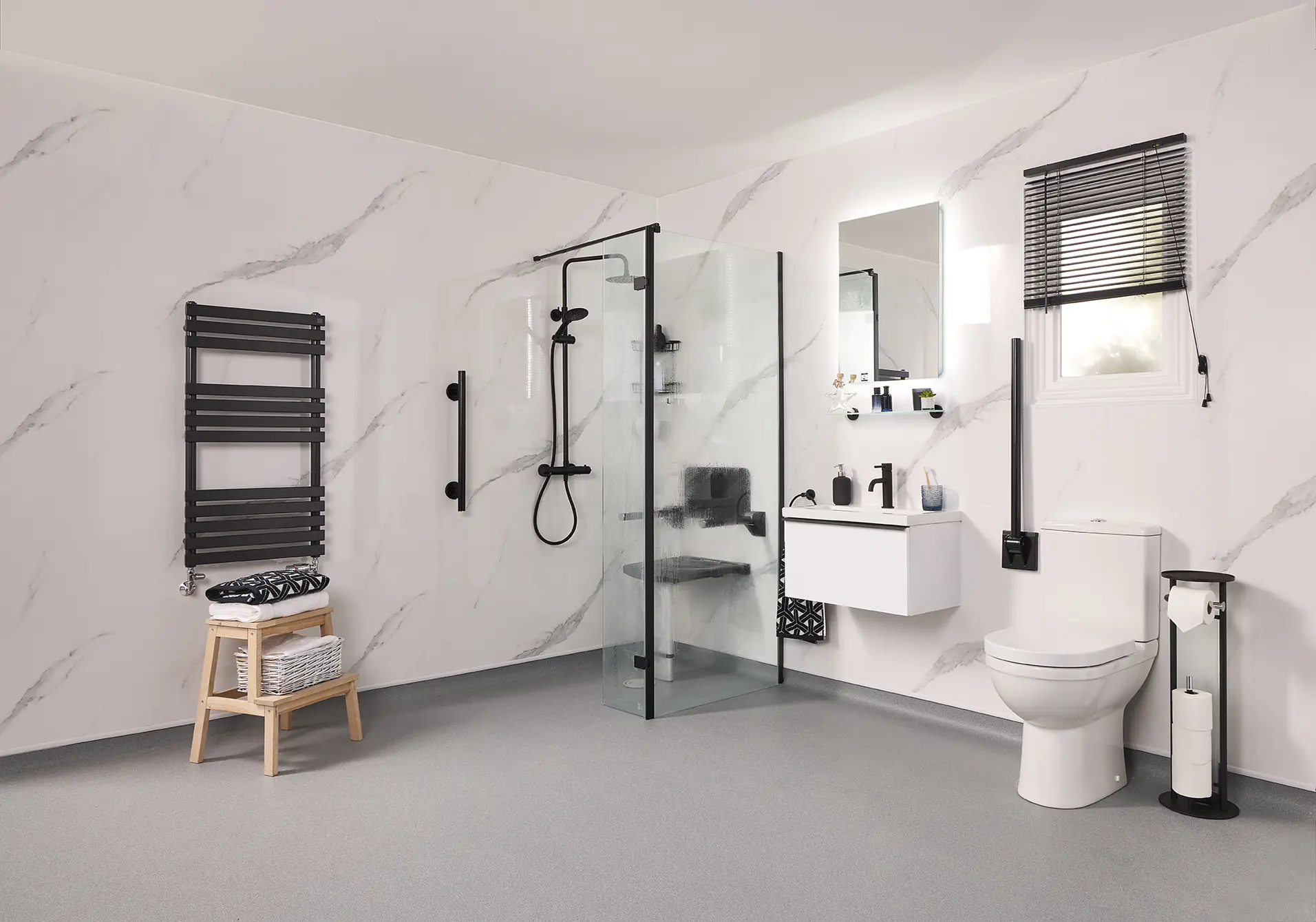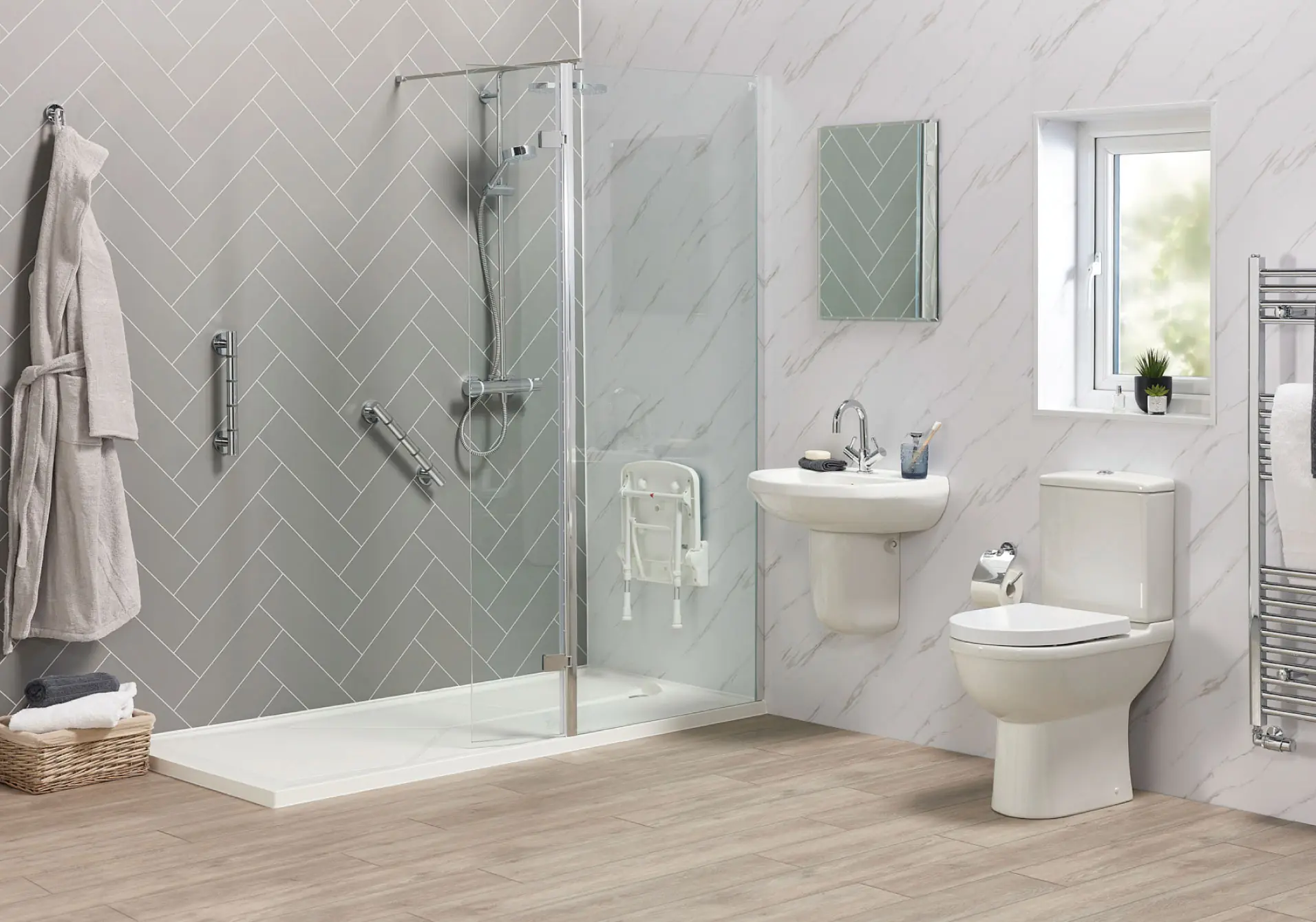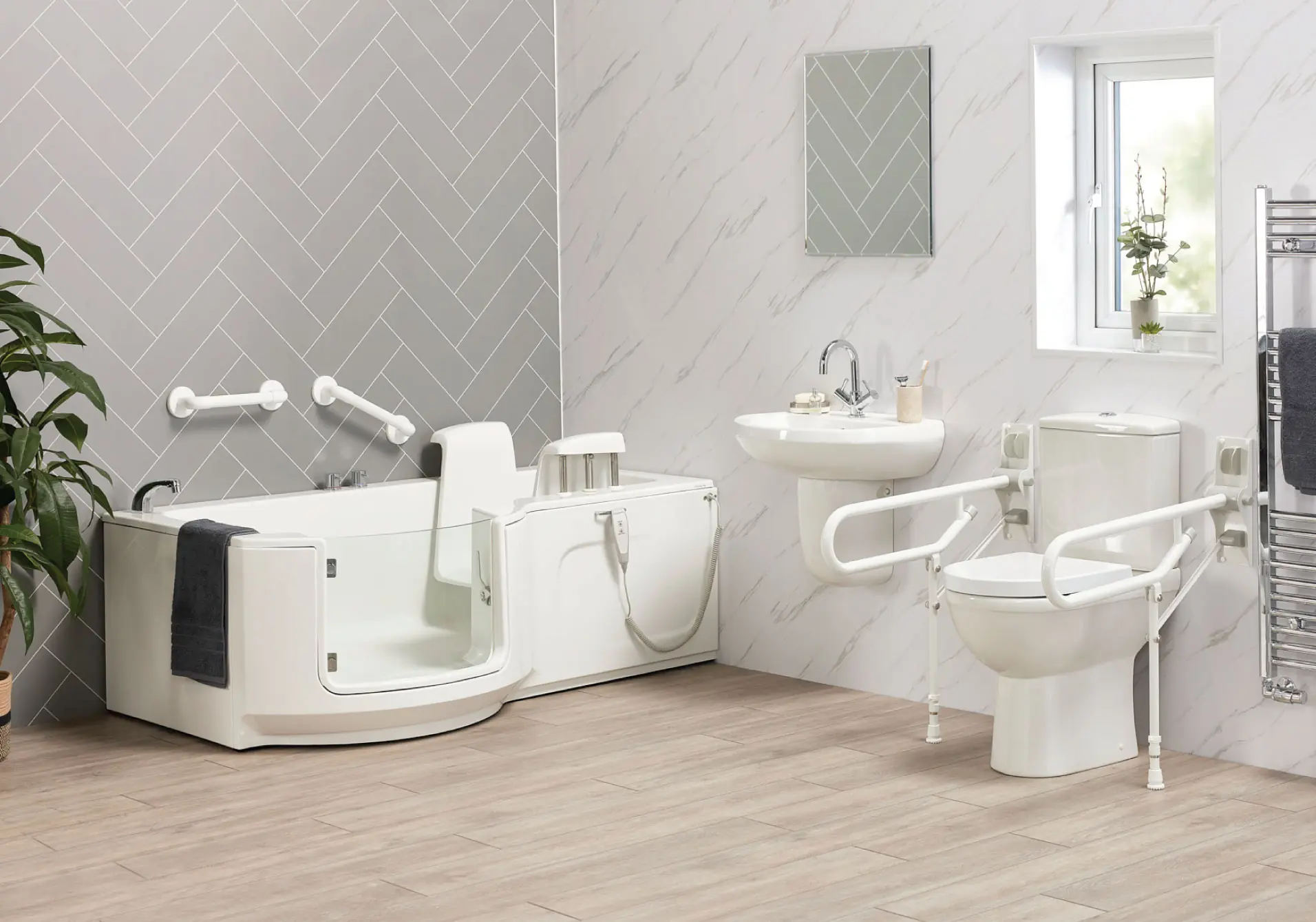Choosing between a wet room and a traditional bathroom is a significant decision that can impact your home’s functionality, style, and value. Both options offer unique advantages, catering to different needs, preferences, and lifestyles. Whether you prioritise modern aesthetics, accessibility, or classic charm, understanding the key differences will help you make an informed choice.
In this guide, we’ll delve into the essential aspects of wet rooms and bathrooms, highlighting their benefits, and providing insights to help you determine which option aligns with your vision for your home.
What Is a Wet Room?
A wet room is an innovative bathroom design where the shower area is fully open and integrated with the rest of the space. The floor is slightly sloped towards a drain, allowing water to flow seamlessly across the surface. This design eliminates the need for shower trays, creating a sleek, modern look.
Wet rooms often feature minimalistic elements like glass partitions and waterproof materials, making them not only stylish but also highly practical.
What Is a Traditional Bathroom?
A traditional bathroom typically consists of a bathtub, shower cubicle, toilet, and sink, all enclosed within distinct areas. The shower is usually raised and separated by a curtain or glass door, while the bathtub is a separate unit. This setup helps contain water within specific zones, keeping the rest of the room dry.
Bathrooms offer more flexibility in terms of design and storage, making them a staple in many homes.
Wet Room vs. Traditional Bathroom: Key Differences
Understanding the core differences between wet rooms and traditional bathrooms is crucial in determining which is better suited for your home.
Design and Layout
- Wet Rooms: Open and spacious with a seamless, level floor, allowing for a minimalist, contemporary look.
- Bathrooms: More compartmentalised, offering distinct areas for bathing, showering, and other activities.
Water Management
- Wet Rooms: Entire space is waterproof, with water freely flowing across the floor. Requires proper drainage to avoid pooling.
- Bathrooms: Water is contained within designated areas, reducing the risk of water spreading throughout the room.
Space Utilisation
- Wet Rooms: Ideal for small spaces, as the open design can make a room feel larger.
- Bathrooms: Require more space due to separate fixtures and storage areas.
Accessibility
- Wet Rooms: Highly accessible, with no steps or barriers, making them perfect for those with mobility issues.
- Bathrooms: Traditional design may include steps or raised areas, which can be challenging for individuals with limited mobility.
Advantages of Wet Rooms
Choosing a wet room offers several benefits, particularly for those seeking a modern, accessible space:
1. Modern and Stylish Design
Wet rooms are synonymous with sleek, contemporary design. The open layout and minimalist features allow for a variety of creative design choices, from luxurious floor-to-ceiling tiles to bold, statement fixtures.
2. Improved Accessibility
Wet rooms are particularly beneficial for those with mobility challenges. The level floor and lack of barriers make it easy for wheelchair users or those who require assistance to navigate the space.
3. Easy Maintenance
Cleaning a wet room is a breeze. With fewer nooks and crannies, the space can be quickly rinsed down, reducing the time and effort required to keep it sparkling clean.
4. Increases Property Value
A wet room can add a touch of luxury to your home, making it more appealing to potential buyers. The modern design and accessibility features can increase your property’s value, especially in a market where such features are highly sought after.
5. Maximises Small Spaces
Wet rooms are an excellent solution for small bathrooms or en-suites. The open-plan design creates a sense of spaciousness, making even the smallest room feel more expansive.
Advantages of Traditional Bathrooms
Despite the allure of wet rooms, traditional bathrooms continue to offer undeniable benefits:
1. Familiar and Versatile
Bathrooms are a familiar feature in homes, offering a comfortable and practical solution for everyday use. Their design can be adapted to suit various styles, from rustic and traditional to sleek and modern.
2. Dry Storage and Comfort
Traditional bathrooms allow for dry storage, keeping towels, toiletries, and other essentials safe from water exposure. Additionally, the ability to use soft furnishings like rugs and curtains adds a layer of comfort and warmth.
3. Suitable for All Homes
Bathrooms work well in any type of home, from modern apartments to historic cottages. Their versatile design makes them a safe choice for homeowners who prefer a classic look.
4. Easier Renovations
If your home already has a traditional bathroom, renovating or upgrading it is often simpler and less costly than converting to a wet room. You can update fixtures or finishes without having to waterproof the entire space.
5. Universally Appealing
While wet rooms are trendy, not everyone is a fan of their open design. A well-designed bathroom with high-quality fixtures appeals to a broad audience, making it a safer bet if you plan to sell your home.
Wet Room vs. Traditional Bathroom: Which Is Best for You?
Still undecided? Here’s a quick comparison to help you choose:
Opt for a Wet Room if:
- You value accessibility: A wet room is ideal for those with mobility challenges, offering an open, barrier-free space.
- You prefer showers: If you primarily use a shower and rarely take baths, a wet room can streamline your routine.
- You want a modern aesthetic: Wet rooms offer a contemporary, minimalist look that can elevate your home’s style.
- You need an easy-to-clean space: Wet rooms are easier to maintain, making them a practical choice for busy households.
- You want to increase property value: Installing a wet room can add a luxurious touch that appeals to future buyers.
Opt for a Traditional Bathroom if:
- You prefer a classic design: Bathrooms offer a timeless appeal that works in any home.
- You need dry storage: Bathrooms provide space for storing towels, linens, and toiletries, safe from water exposure.
- You enjoy baths: If soaking in a tub is part of your routine, a traditional bathroom is essential.
- You have the space: Bathrooms work well in larger areas where separate zones for bathing and showering are desirable.
- You want a versatile space: Bathrooms can be easily updated or renovated to suit changing styles and needs.
Conclusion: Wet Room or Bathroom?
Ultimately, the choice between a wet room and a traditional bathroom comes down to your personal preferences, needs, and the specific characteristics of your home. Both options offer distinct advantages, so consider what matters most to you—whether it’s modern design, accessibility, ease of maintenance, or a familiar, versatile space.
EA Mobility is here to help you create the perfect bathroom solution that fits your lifestyle. Whether you’re drawn to the sleek elegance of a wet room or the classic charm of a traditional bathroom, our expert team can guide you through every step of the process.




